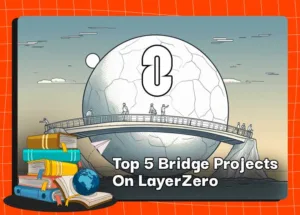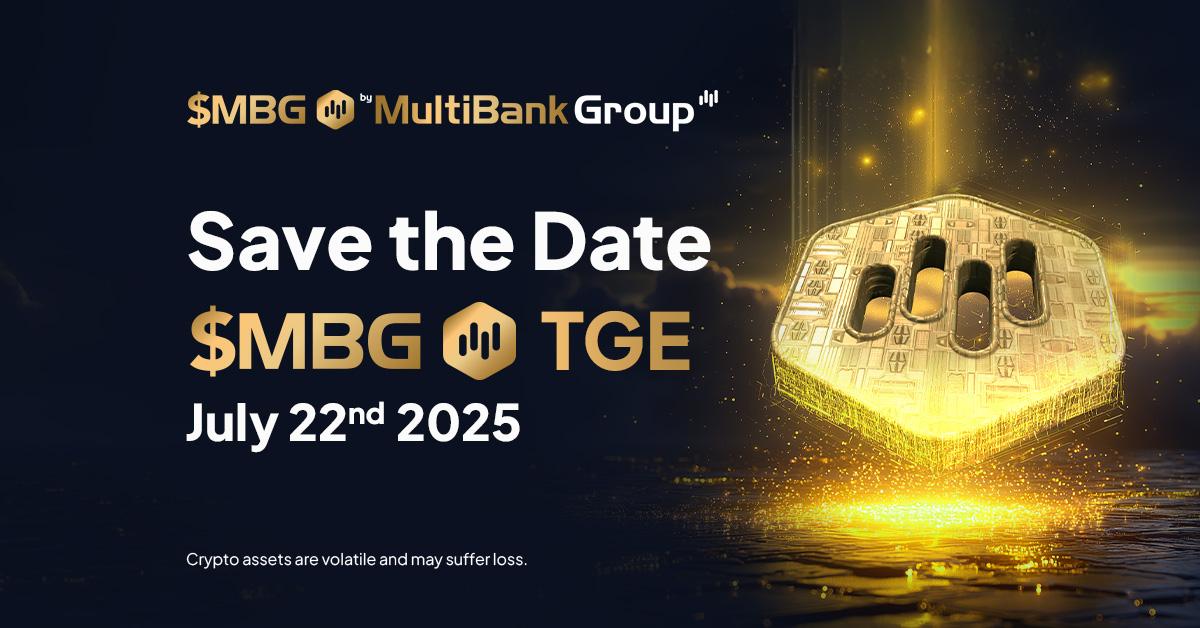Key Points:
- Optimism rebrands to OP Mainnet, introducing the concept of a Superchain ecosystem comprising various Layer 2 solutions on the OP Stack.
- Key projects in the Superchain ecosystem include Coinbase’s Base and Zora Network, both utilizing OP Stack technology to enhance transaction speeds and reduce gas expenses for their users.
- The development journey of Optimism toward Superchain has faced challenges but has resulted in a modular architecture and inter-chain communication, fostering blockchain interoperability and potential widespread adoption.
Recently, Optimism made a remarkable move when it announced its name change to OP Mainnet, thereby realizing the goal of turning the project into a “Superchain” network with many different Layer 2. Let’s learn about this topic in detail with Coincu.
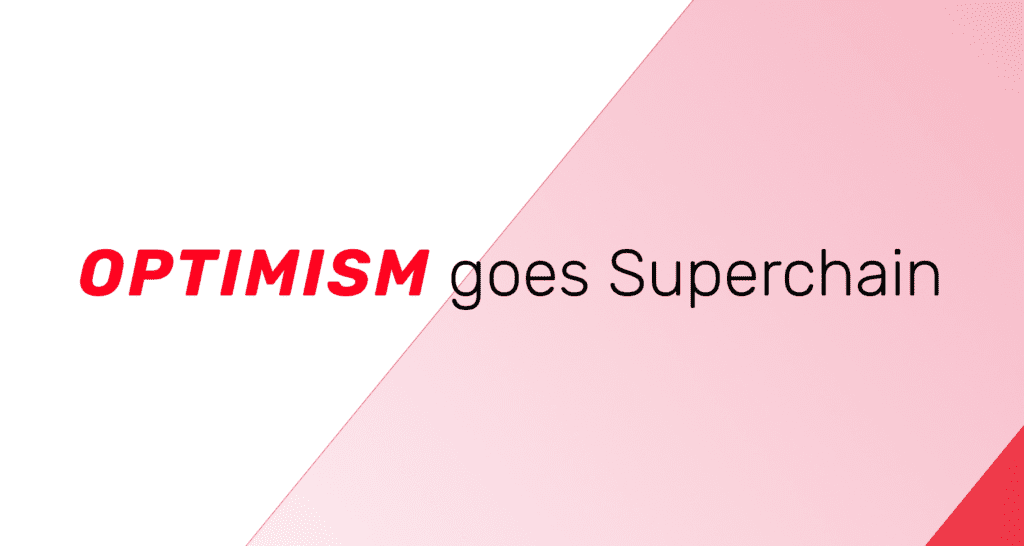
What is Superchain?
Superchain is a set of project rollups that have been launched on the OP Stack. Superchain is planned to provide a decentralized, safe, and dependable scaling platform to let developers build decentralized apps on the Ethereum blockchain. The OP Mainnet will serve as the Superchain’s foundation layer.
Presently, a few famous names have surfaced in this Superchain ecosystem:
- Coinbase is employing OP Stack technology to create a new Layer 2 dubbed Base. The Base project is now in beta (testnet) and has completed half of its trip before going to the mainnet. While no exact date has been set, the project has indicated that the mainnet for Base will be deployed in 2023.
- Apart from Base, the NFT marketplace project Zora recently revealed Zora Network, a blockchain network. This Layer 2 will assist Zora marketplace users in enhancing transaction speed and cut gas expenses by using OP Stack technology.
The development journey of Optimism leading to the creation of Superchain has been riddled with numerous challenges and pivotal events that shaped its evolution. From inefficient beginnings to embracing simplicity as a core principle, the Optimism team navigated through obstacles to realize their vision of a robust blockchain platform.
The initial stages of development were focused on creating a Layer 2 solution based on Plasma. However, the team encountered significant setbacks, which ultimately forced them to make a bold switch to the Rollup model. Even with this new approach, the Optimism build process remained an arduous task, demanding immense effort and perseverance from the team.
Amidst these trials, a breakthrough occurred when a talented developer named Geohot joined the ranks. Geohot’s intervention proved to be a game-changer, as he managed to reduce a colossal 6,000-line codebase that had consumed the Optimism team’s time and energy for months down to a mere 300 lines within a few short days. This transformative experience led the team to adopt simplicity as a guiding principle for their future endeavors.
In 2021, the team faced another pivotal moment when the Optimistic Virtual Machine (OVM) was phased out. This decision presented a formidable challenge, compelling the team to contemplate a modular approach to implementation and proofing. Despite the difficulty, this shift allowed EVM Equivalence to become available on the Optimism network, expanding the platform’s compatibility and usability.
The path of Optimism has undoubtedly been fraught with obstacles, and the team recognized the need for a comprehensive solution. Hence, the birth of OP Stack marked a significant turning point in their journey, eventually leading to the emergence of Superchain. Built on the lessons learned and the principles of simplicity and efficiency, Superchain aims to propel blockchain technology forward with a renewed sense of purpose.
As Superchain takes its first successful steps towards the future, the challenges faced by the Optimism team have proven to be instrumental in shaping the platform’s robustness and potential for widespread adoption. With a modular architecture and EVM Equivalence, Superchain is poised to offer a powerful and user-friendly ecosystem for developers and users alike.
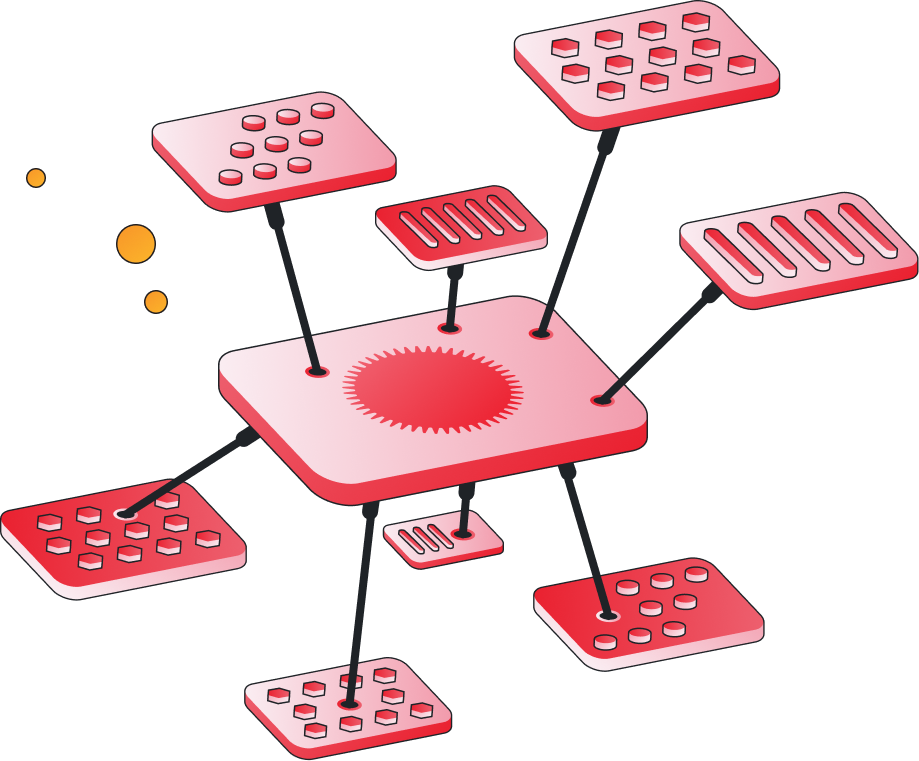
At present, the disjointed state of the crypto market poses a significant challenge in onboarding the next generation of users. The Optimism Superchain, however, holds the potential to change this landscape drastically. Acting as a catalyst for Layer 2 chains, advancements in data availability on the main Ethereum network, particularly through EIP-4844 (Proto-Danksharding), play a pivotal role in paving the way for the Superchain’s success.
EIP-4844 is expected to revolutionize rollup solutions by significantly increasing data availability, resulting in cheaper transactions for end-users. Coinbase engineers’ involvement in the development of EIP-4844 led to a fortuitous collaboration with the Optimism team. As a consequence, Coinbase decided to utilize the OP Stack as the architecture for its own Layer 2 chain, Base. With approximately ninety-eight million users, Base aims to provide an accessible on-ramp into DeFi for Coinbase’s vast user base.
By adopting the OP Stack, Base achieves a more cohesive foundation, abstracting away technical nuances between chains. Consequently, asset transfers between Optimism and Base become smoother and less risky when compared to transfers between Optimism and other chains like the Binance Smart Chain. The OP Stack acts as an enabler for creating interoperable bridges, connecting Ethereum’s vast archipelago of chains to the mainland.
To visualize this transformation, one can envision Layer 1 blockchains as isolated and siloed islands surrounded by vast oceans. In contrast, Ethereum and Layer 2 scaling solutions form a rich archipelago of interconnected islands, with the OP Stack allowing the creation of infinite new islands, bridging the gaps between them. This interconnected ecosystem facilitates the seamless movement of assets and users between various platforms.
The implications of the Layer 2 narrative go beyond most people’s imagination, offering a clear path toward the global adoption of cryptocurrencies and blockchain technology. As the Superchain concept takes flight, crypto’s fragmented landscape is set to be unified, providing a streamlined and user-friendly experience for both existing and new crypto enthusiasts. With the Optimism Superchain leading the charge, the future of crypto looks promising, leaving behind the limitations of the past to embrace a more connected and inclusive era of digital finance.
OP Stack & Superchain
Every Layer 2 chain typically comprises three essential modules: the consensus layer, execution layer, and settlement layer. What sets the OP Stack apart is its ability to generate standardized open-source building blocks for each of these elements, empowering developers to construct distinct Layer 2s that cater to specific needs while promoting code reuse and refinement.
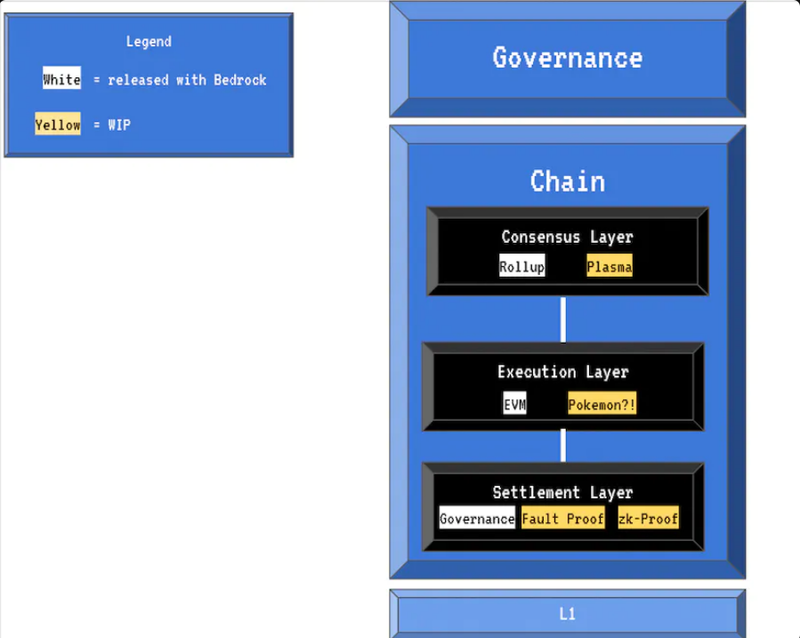
Drawing inspiration from Ethereum’s successful scaling through modularity, the OP Stack replicates this concept for Layer 2 solutions. With each component becoming a standardized module, developers can now construct new Layer 2 chains akin to assembling Lego pieces, whether for general-purpose or application-specific purposes. This approach not only accelerates the process of building Layer 2s but also enhances the strength of the code through iterative improvements.
By curating an extensive open-source library of code and standardized modules, the OP Stack democratizes the creation of Layer 2 chains, enabling anyone to spin up their own chain effortlessly. This development lays the groundwork for what experts are calling a “Cambrian explosion” in the number of chains, sparking a flurry of innovative Layer 2 solutions across the Ethereum ecosystem.
David Hoffman from Bankless draws an intriguing analogy, likening the OP Stack’s impact to that of the ERC-20 token standard. Just as ERC-20 tokens simplified the creation of fungible tokens on Ethereum, the OP Stack aims to make the process of spinning up a Layer 2 chain as effortless as creating an ERC-20 token, further fueling the proliferation of Layer 2 adoption.
The power of the OP Stack lies in its ability to distill each component of a Layer 2 into a standardized module, making it a plug-and-play solution for entities seeking to build their Layer 2 chains. This flexibility empowers developers to choose from a wide array of available module layers, including alternative Layer 2 solutions beyond Rollup, or opting for different consensus mechanisms like ZKP (Zero-Knowledge Proof) instead of Fault Proof. Moreover, developers can even integrate Layer 1 solutions such as Celestia or leverage the Bitcoin network for the execution layer.
Ultimately, the OP Stack empowers individuals and organizations alike, offering them an easy-to-use set of SDKs to build and customize their Layer 2 platforms on Ethereum. With its Lego-like approach to Layer 2 construction and a vast repository of standardized modules, the OP Stack sets the stage for a new era of scalable, efficient, and diverse Layer 2 solutions, propelling Ethereum’s ecosystem towards unprecedented growth and innovation.
Interaction between Op-chains in Superchain
According to Optimism’s vision, the ultimate goal is not merely to construct a single blockchain but to foster a comprehensive Digital Society that thrives on seamless and efficient interaction between different Op-chains. This interconnectedness opens up a world of possibilities for projects and developers within the Optimism ecosystem.
A key feature of Op-chains is their capability to communicate and interact with one another. This inter-chain communication forms the bedrock for establishing an omnichain system that facilitates smooth cross-chain transactions. By enabling Op-chains to message and collaborate, Optimism lays the groundwork for the future of blockchain technology.
The foundational element enabling this interoperability is the OP Stack, which offers a high degree of flexibility in passing the Sequencer—a crucial component in the transaction verification process. However, to further expedite and streamline cross-chain interactions, Optimism encourages Op-chains to share the same Sequencer Set. This shared approach significantly reduces transaction times and minimizes potential risks.

In a bid to promote collaborative innovation, projects within the Optimism Collective can now register to utilize the Set Sequencer, further reinforcing the vision of a united Superchain. This shared resource pool empowers projects to pool their resources and enhance their operational capabilities collectively.
It is worth noting that projects adopting the common Set Sequencer are considered part of the growing Superchain community. The Superchain represents a major milestone in the platform’s development journey and is expected to become more decentralized as the foundational Bedrock infrastructure reaches its full potential.
With the Op-chains and Superchain technologies taking center stage, Optimism’s vision of a Digital Society is closer to becoming a reality. By fostering an environment of interconnectedness and collaboration, the platform aims to revolutionize the blockchain landscape and unlock the true potential of decentralized applications and services.
Conclusion
The Superchain ecosystem aims to decentralize further, with the transition to becoming fully decentralized happening after the success of Bedrock, which is expected to occur on June 7, 2023. As of now, it’s difficult to predict the exact future of Superchain, but with OP Labs’ proven experience, there is a level of trust in their capabilities. However, it’s worth noting that the Bedrock release faced a delay of one year compared to the original expectations.
Base is the first blockchain to participate in the Superchain, but it seems like there is a discussion about whether the benefits it brings should be limited to the Base project only or shared with the entire Optimism Collective. Sharing revenue from transaction fees is seen as a positive concept.
It appears that the current situation requires more time to observe OP Labs’ operations, development, and overall performance before making a more thorough assessment of the Superchain ecosystem. This approach allows for a more informed judgment of the project’s progress and potential future implications.
DISCLAIMER: The information on this website is provided as general market commentary and does not constitute investment advice. We encourage you to do your own research before investing.











